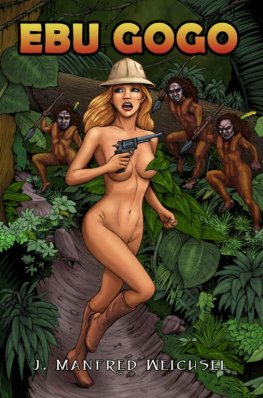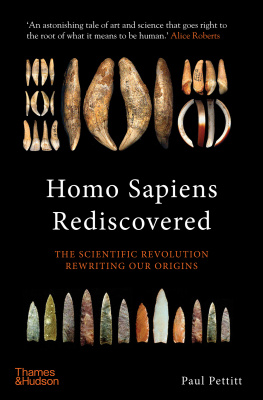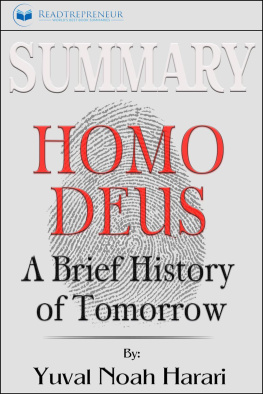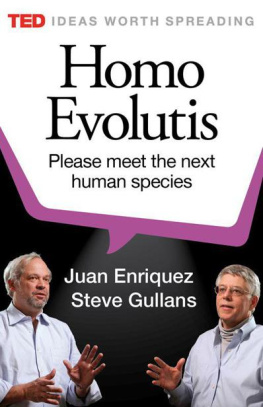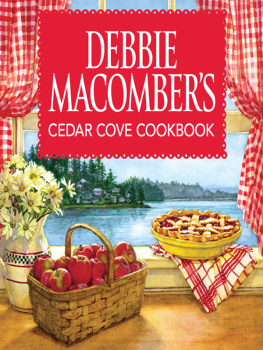Debbie Argue - Little Species, Big Mystery: The Story of Homo Floresiensis
Here you can read online Debbie Argue - Little Species, Big Mystery: The Story of Homo Floresiensis full text of the book (entire story) in english for free. Download pdf and epub, get meaning, cover and reviews about this ebook. year: 2022, publisher: MelbourneUP, genre: Romance novel. Description of the work, (preface) as well as reviews are available. Best literature library LitArk.com created for fans of good reading and offers a wide selection of genres:
Romance novel
Science fiction
Adventure
Detective
Science
History
Home and family
Prose
Art
Politics
Computer
Non-fiction
Religion
Business
Children
Humor
Choose a favorite category and find really read worthwhile books. Enjoy immersion in the world of imagination, feel the emotions of the characters or learn something new for yourself, make an fascinating discovery.
- Book:Little Species, Big Mystery: The Story of Homo Floresiensis
- Author:
- Publisher:MelbourneUP
- Genre:
- Year:2022
- Rating:5 / 5
- Favourites:Add to favourites
- Your mark:
- 100
- 1
- 2
- 3
- 4
- 5
Little Species, Big Mystery: The Story of Homo Floresiensis: summary, description and annotation
We offer to read an annotation, description, summary or preface (depends on what the author of the book "Little Species, Big Mystery: The Story of Homo Floresiensis" wrote himself). If you haven't found the necessary information about the book — write in the comments, we will try to find it.
Debbie Argue: author's other books
Who wrote Little Species, Big Mystery: The Story of Homo Floresiensis? Find out the surname, the name of the author of the book and a list of all author's works by series.
Little Species, Big Mystery: The Story of Homo Floresiensis — read online for free the complete book (whole text) full work
Below is the text of the book, divided by pages. System saving the place of the last page read, allows you to conveniently read the book "Little Species, Big Mystery: The Story of Homo Floresiensis" online for free, without having to search again every time where you left off. Put a bookmark, and you can go to the page where you finished reading at any time.
Font size:
Interval:
Bookmark:



MELBOURNE UNIVERSITY PRESS
An imprint of Melbourne University Publishing Limited
Level 1, 715 Swanston Street, Carlton, Victoria 3053, Australia
www.mup.com.au

First published 2022
Text Debbie Argue, 2022
Images various contributors, various dates
Design and typography Melbourne University Publishing Limited, 2022
This book is copyright. Apart from any use permitted under the Copyright Act 1968 and subsequent amendments, no part may be reproduced, stored in a retrieval system or transmitted by any means or process whatsoever without the prior written permission of the publishers.
Every attempt has been made to locate the copyright holders for material quoted in this book. Any person or organisation that may have been overlooked or misattributed may contact the publisher.
Cover design by Pfisterer + Freeman
Typeset by Megan Ellis
Cover image by Paul A. Souders, courtesy Getty Images
Printed in China by 1010 Printing International Limited

9780522877915 (paperback)
9780522879162 (paperback, signed)
9780522877922 (ebook)
To the memory of Emeritus Professor Colin Groves, eminent scholar and much valued teacher, colleague and friend.
24 June 1942 30 November 2017

Image provided by Debbie Argue.
News of the discovery of a new species, Homo floresiensis, burst upon an unsuspecting world in 2004: a series of small, human-like bones had been discovered during archaeological excavations in a cave on the Indonesian island of Flores. In one swoop, much of what we thought we knew about human evolution was challenged. Could there really have been a population of tiny beings around 1 metre tall and living at the same time as we Homo sapiens? Such a scenario could hardly have been envisioned before this remarkable discovery was made. The species, with its odd combination of a small head, short legs and elongated feet, captured the publics imagination and the nickname the Hobbit was quickly adopteda reference, of course, to JRR Tolkiens well-known book of the same name.
In science, new ideas are subject to examination and questioning, and in this case there was swift and sustained controversy, with the bones interpreted by some to be nothing more than the remains of diseased modern humans. Meanwhile, those who recognised that this discovery did indeed herald something new wanted to know just where this enigmatic species would fit on the human evolutionary tree. Who were its ancestors? And how did this species get to an island that had never been attached to a mainland?
This book is a personal narrative about the discovery of H. floresiensis and all that happened afterwardsthe controversies, the puzzles, the questions and the answers. The story is told from the perspective of experts worldwide who have conducted groundbreaking research on the characteristics and evolution of H. floresiensis. I am most fortunate to have been closely involved in the study of this intriguing and perplexing species since it was first announced in the scientific literature. I still have a sense of wonder that my life took this trajectory: never had I dreamt that such great excitement awaited me, and yet, looking back on it now, I can see that the past had held me in its sway since I was quite young.
It is all so distant from my eleven-year-old self who loved exploring the ruins of old Australian homesteads, inspired by a piece in a magazine for schoolchildren provided by the NSW Education Department. That story began when two children who had recently arrived in a small country town from faraway England were wandering along a street, feeling disillusioned with their new circumstances. Sensing their loneliness and frustration, a woman, leaning over her garden gate, suggested they go explore along a country road where they would find an old house. Pushing through matted grass and an overgrown garden, the children found the abandoned house. It was nothing like theyd ever seen. Gingerly the children entered. They tried to understand what each room would have been used for, imagining who might have lived there all those years ago. What would life have been like back then? Later, they even returned with pencils and paper and drew up a floor plan to better understand the layout of the rooms. After using clues from elements of the house, and with the womans help, the children worked out part of its history.
That it was possible to figure out something like this captivated me. From then on, whenever my family drove past abandoned old houses or ruins, I would badger my parents to stop the car. They would indulge my new interest (well, not always) and off wed go, clambering over fences and through paddocks.
It was at around this age that I read The Rocks of Honey by Patricia Wrightson. The novel follows a boy whose family has recently moved to the Blue Mountains, west of Sydney. He befriends an Aboriginal boy as well as a girl whos also new to the area. When an Aboriginal Elder tells them the legend of the nearby Rocks of Honey, guardian of a mysterious stone axe,
These two narratives tucked themselves away in the back of my mind to percolate over the years. Following secondary school, I gained admission to the Australian National University (ANU) in my hometown of Canberra, where I studied geography (great fieldwork), economics (challenging and interesting), history (Youll never pass this subject, my helpful lecturer told me) and Asian civilisation (archaeology included). Then it was off to Teachers College in Sydney: flatting, parties, new friends. The following year I was out teaching at a secondary school.
But what I really wanted to do was travel. By 1974 Id earned enough money to fund a trip and, together with a friend, I sailed out of Sydney on the ship Britanus. We docked at Portsea and set off backpacking around the United Kingdom and mainland Europe. My love of archaeology re-emerged: Stonehenge, Skara Brae, the Roman aqueducts in Italyall so different from the ruins Id come to know back home. Six months later, not wanting my adventures to end, I signed on for a bus trip from London to Kathmandu. But while we were in Beirut, our travel company went bankrupt. We were stranded. Our ongoing-travel funds had been swallowed up and, poignantly, our bus had to be abandoned on the street. Left to our own devices, many of us opted to forge ahead together, using whatever public transport was available: truck convoys across the desert, dhows across the Persian Gulf. Our journey was peppered with the archaeological sites Id learned about while studying ancient history: Baalbek, Persepolis, Petra. We were exposed to cultures that seemed so exotic. And there was romance in the air: it was on this trip that I met my future husband, Fraser.
Life and parenting in New Zealand and Canberra eclipsed the next decade or so. It was not until our children were older that I had the opportunity to re-engage with archaeology. I joined the Canberra Archaeology Society and volunteered for every dig I could. I went back to university and enrolled in another Bachelor of Arts degree, focusing on prehistory and archaeology. I not only passed my coursework, I got good grades, much better than in my first degree. But one subject had me stumped: human evolution. I failed the first-semester test. Disheartened but not beaten, I knuckled down and got to work on this dicult (for me) topic, achieving a high distinction at the end of the yearand a new respect for the subject.
Font size:
Interval:
Bookmark:
Similar books «Little Species, Big Mystery: The Story of Homo Floresiensis»
Look at similar books to Little Species, Big Mystery: The Story of Homo Floresiensis. We have selected literature similar in name and meaning in the hope of providing readers with more options to find new, interesting, not yet read works.
Discussion, reviews of the book Little Species, Big Mystery: The Story of Homo Floresiensis and just readers' own opinions. Leave your comments, write what you think about the work, its meaning or the main characters. Specify what exactly you liked and what you didn't like, and why you think so.


